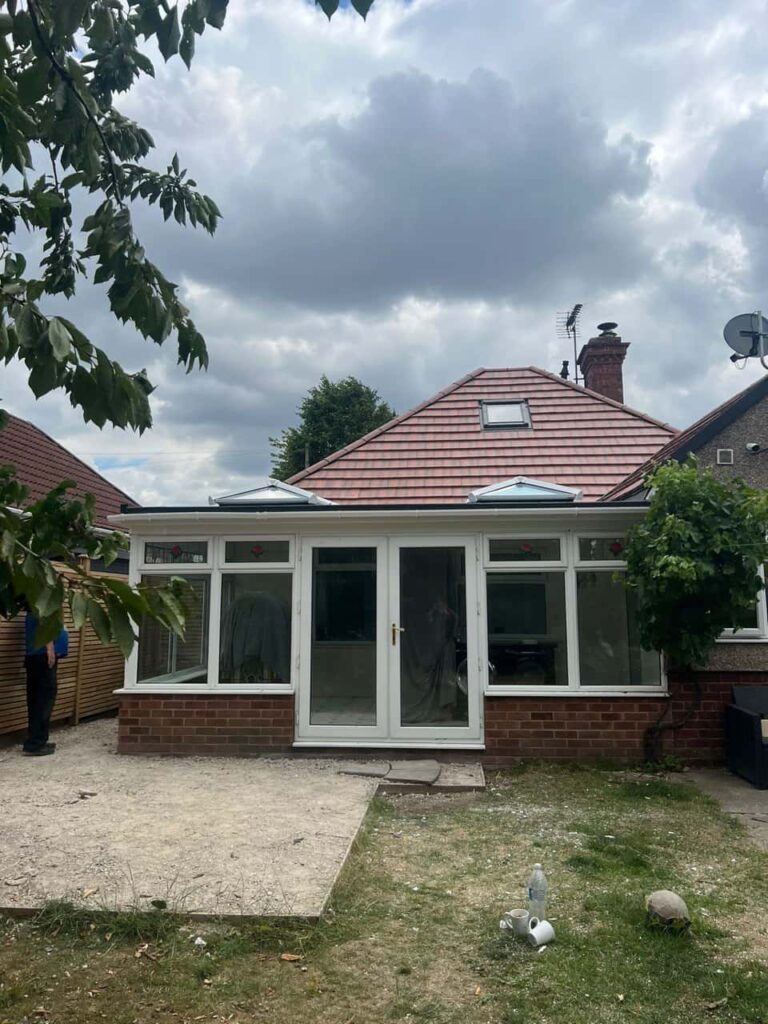Introduction
A sagging roof is more than a cosmetic issue — it’s a clear sign of structural weakness that can compromise the safety, weatherproofing, and value of your property. Whether the dip is slight or severely noticeable, prompt attention is essential to prevent further damage or costly repairs.
At Greenhithe Roofing Repairs, based in Greenhithe, Kent, we regularly investigate and correct sagging roofs for homeowners and businesses. In this article, we’ll highlight six common causes of roof sagging, explain why they occur, and outline the importance of professional inspection and timely repairs.
1. Excess Weight from Roofing Materials or Snow
Roofs are designed to bear a certain amount of load, but when that threshold is exceeded — whether from additional layers of roofing material or prolonged snow accumulation — the structure can begin to sag.
Key contributors to overloading:
- Multiple layers of old tiles or felt left in place during reroofing
- Heavy roofing materials (e.g., slate or concrete tiles) on an inadequate frame
- Ice dams and compacted snow during cold spells
In Greenhithe’s varied climate, unexpected snowfall or poor roof drainage can create this exact scenario. If left unaddressed, the sagging may worsen and lead to structural failure.
2. Age and Material Deterioration
Over time, even the best roofing systems will degrade. Timber rafters, in particular, can lose their strength due to rot, insect infestation, or general wear — especially in roofs that haven’t been routinely inspected.
Age-related deterioration may include:
- Rotted or cracked beams
- Corroded fasteners and weakened fixings
- Degraded insulation or underlay contributing to damp
Older properties in Greenhithe, Kent, are especially susceptible to this form of sagging due to traditional building methods and untreated timber frameworks.
3. Poor Roof Design or Installation
Improper construction can result in inadequate load distribution or insufficient support for roofing materials. In some cases, the original build may not have accounted for future weight, extensions, or changes in weather exposure.
Design and installation flaws include:
- Inadequate spacing of rafters or joists
- Poorly installed trusses or connectors
- Misjudged load calculations during loft conversions
A sagging roof caused by design flaws typically becomes noticeable within a few years of construction or modification. It’s a clear indication that the structure was not built to standard or has been altered without due consideration.
4. Water Damage and Moisture Intrusion
Moisture is one of the most destructive forces affecting roofs. When water finds its way into the roof deck or insulation layer, it weakens the timber and leads to rot and sagging.
Signs of water-related damage:
- Mould or mildew on ceiling boards
- Damp patches or bubbling plaster indoors
- Discoloured or warped timber in the loft
Blocked gutters, damaged flashing, or missing roof tiles can all allow water ingress. In coastal and damp-prone areas like Greenhithe, routine checks for leaks are essential to prevent this kind of damage.
5. Structural Movement in the Building
Subsidence, shifting foundations, or general settlement of the building can distort the alignment of the roof. This leads to uneven pressure on the supporting framework, which may present as a sag or bow in the roofline.
Structural movement can be triggered by:
- Soil erosion under the foundations
- Poor drainage around the base of the property
- Seasonal ground movement common in clay-heavy soils
Any visible distortion in the walls or ceiling may point to broader structural movement and should be assessed by professionals in conjunction with roofing specialists.
6. Pests and Infestation
Rodents, birds, and insects can cause surprising amounts of damage to roofing structures. Nesting, gnawing, or burrowing into timber can compromise the load-bearing capacity of key components.
Infestation risks include:
- Squirrels or rats damaging insulation and rafters
- Insect activity (e.g., woodworm or beetles) weakening joists
- Birds dislodging tiles and creating access for water
Infestation often goes unnoticed until structural symptoms such as sagging appear. In Greenhithe, preventative pest control and regular roof checks can help avoid these costly surprises.
Conclusion
A sagging roof is not something to ignore. Whether the cause is water damage, ageing materials, design flaws, or environmental pressure, professional diagnosis is the first step to preserving the safety and integrity of your home.
At Greenhithe Roofing Repairs, we provide comprehensive roof inspections and structural assessments throughout Greenhithe, Kent. If you’ve noticed dips in your roofline, internal damp patches, or creaking timbers, don’t wait until the problem escalates. Contact our experienced team today to schedule an expert evaluation and ensure your roof remains safe, secure, and structurally sound for years to come.
Call us on: 01322 952 297
Click here to find out more about Greenhithe Roofing Repairs
Click here to complete our contact form and see how we can help with your roofing needs.

